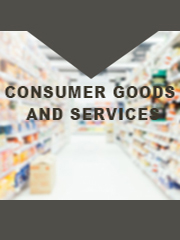Report overview
Anti-aging cosmetic products is a term used for face and body cosmetics products that slow or limit the physical changes that occur due to the aging of an individual. The major concerns among the people are aging skin and aging hair. There are a wide range of products available in the market including anti-wrinkle creams, anti-skin sagging products, and UV absorbers to treat skin-related aging problems. Also, various types of shampoos, hair colors, serums, conditioners, and oils are used to treat hair-related problems. Anti-aging cosmetic products consists of various ingredients including retinoids, equol, epidermal growth factor serums, alpha hydroxy acid, peptides, coenzyme q10, antioxidants, vitamin C, and sunscreen. These ingredients help reduce fine lines, wrinkles, pores, and skin sagging.
This report aims to provide a comprehensive presentation of the global market for Anti-aging Cosmetics Products, with both quantitative and qualitative analysis, to help readers develop business/growth strategies, assess the market competitive situation, analyze their position in the current marketplace, and make informed business decisions regarding Anti-aging Cosmetics Products. This report contains market size and forecasts of Anti-aging Cosmetics Products in global, including the following market information:
Global Anti-aging Cosmetics Products Market Revenue, 2018-2023, 2024-2035, ($ millions)
Global Anti-aging Cosmetics Products Market Sales, 2018-2023, 2024-2035, (K Units)
Global top five Anti-aging Cosmetics Products companies in 2022 (%)
The global Anti-aging Cosmetics Products market was valued at US$ million in 2022 and is projected to reach US$ million by 2035, at a CAGR of % during the forecast period. The influence of COVID-19 and the Russia-Ukraine War were considered while estimating market sizes.
The U.S. Market is Estimated at $ Million in 2022, While China is Forecast to Reach $ Million.
belowe 25 Years Old Segment to Reach $ Million by 2035, with a % CAGR in next six years.
The global key manufacturers of Anti-aging Cosmetics Products include Allergan, L?Or?al, The Himalaya Drug Company, The Est?e Lauder Companies, Lotus Herbals, Unilever, The Procter and Gamble Company, PhotoMedex and Emmbros Overseas Lifestyle, etc. in 2022, the global top five players have a share approximately % in terms of revenue.
We surveyed the Anti-aging Cosmetics Products manufacturers, suppliers, distributors and industry experts on this industry, involving the sales, revenue, demand, price change, product type, recent development and plan, industry trends, drivers, challenges, obstacles, and potential risks.
Total Market by Segment:
Global Anti-aging Cosmetics Products Market, by Type, 2018-2023, 2024-2035 ($ Millions) & (K Units)
Global Anti-aging Cosmetics Products Market Segment Percentages, by Type, 2022 (%)
belowe 25 Years Old
25 to 35 Years Old
35 to 45 Years Old
above 45
Others
Global Anti-aging Cosmetics Products Market, by Application, 2018-2023, 2024-2035 ($ Millions) & (K Units)
Global Anti-aging Cosmetics Products Market Segment Percentages, by Application, 2022 (%)
Hypermarkets and Supermarkets
Specialty Stores
Online
Others
Global Anti-aging Cosmetics Products Market, By Region and Country, 2018-2023, 2024-2035 ($ Millions) & (K Units)
Global Anti-aging Cosmetics Products Market Segment Percentages, By Region and Country, 2022 (%)
North America
US
Canada
Mexico
Europe
Germany
France
U.K.
Italy
Russia
Nordic Countries
Benelux
Rest of Europe
Asia
China
Japan
South Korea
Southeast Asia
India
Rest of Asia
South America
Brazil
Argentina
Rest of South America
Middle East & Africa
Turkey
Israel
Saudi Arabia
UAE
Rest of Middle East & Africa
Competitor Analysis
The report also provides analysis of leading market participants including:
Key companies Anti-aging Cosmetics Products revenues in global market, 2018-2023 (Estimated), ($ millions)
Key companies Anti-aging Cosmetics Products revenues share in global market, 2022 (%)
Key companies Anti-aging Cosmetics Products sales in global market, 2018-2023 (Estimated), (K Units)
Key companies Anti-aging Cosmetics Products sales share in global market, 2022 (%)
Further, the report presents profiles of competitors in the market, key players include:
Allergan
L?Or?al
The Himalaya Drug Company
The Est?e Lauder Companies
Lotus Herbals
Unilever
The Procter and Gamble Company
PhotoMedex
Emmbros Overseas Lifestyle
Innisfree Corporation
Kaya Limited
The Face Shop
Henkel AG and Company
Christian Dior
LR Health and Beauty Systems
Outline of Major Chapters:
Chapter 1: Introduces the definition of Anti-aging Cosmetics Products, market overview.
Chapter 2: Global Anti-aging Cosmetics Products market size in revenue and volume.
Chapter 3: Detailed analysis of Anti-aging Cosmetics Products manufacturers competitive landscape, price, sales and revenue market share, latest development plan, merger, and acquisition information, etc.
Chapter 4: Provides the analysis of various market segments by type, covering the market size and development potential of each market segment, to help readers find the blue ocean market in different market segments.
Chapter 5: Provides the analysis of various market segments by application, covering the market size and development potential of each market segment, to help readers find the blue ocean market in different downstream markets.
Chapter 6: Sales of Anti-aging Cosmetics Products in regional level and country level. It provides a quantitative analysis of the market size and development potential of each region and its main countries and introduces the market development, future development prospects, market space of each country in the world.
Chapter 7: Provides profiles of key players, introducing the basic situation of the main companies in the market in detail, including product sales, revenue, price, gross margin, product introduction, recent development, etc.
Chapter 8: Global Anti-aging Cosmetics Products capacity by region & country.
Chapter 9: Introduces the market dynamics, latest developments of the market, the driving factors and restrictive factors of the market, the challenges and risks faced by manufacturers in the industry, and the analysis of relevant policies in the industry.
Chapter 10: Analysis of industrial chain, including the upstream and downstream of the industry.
Chapter 11: The main points and conclusions of the report.
